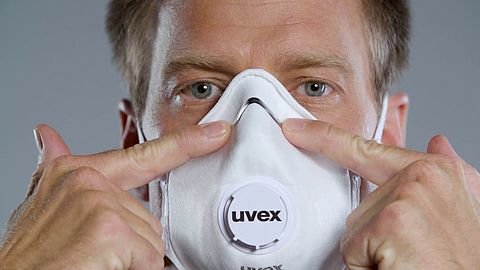Particle-filtering face masks offer effective protection against dust, mist and fumes. The densely woven filter fabric prevents solid materials from passing through and the internal layers are electrostatically charged to ensure that hazardous materials adhere to them and cannot be inhaled. The classifying system consists of the three FFP classes, the abbreviation FFP stands for "filtering facepiece". A respirator mask covers mouth and nose and is constructed of various filter materials and the mask itself. Their use is mandatory in working environments exceeding the occupational exposure limit value (OEL). This is the maximal concentration of dust, smoke, and/or aerosols in our breathing air that won’t result in harm to health. In case of transgression, respirator masks must be worn.
Respirators are given an ‘assigned protection factor’ or APF classification to help the wearer select the right level of protection.



